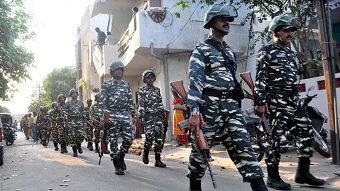The Modi government has flagged the problem of states not sparing officers of the Indian Police Service (IPS) for central deputation, and asked chief secretaries to “personally” look into the matter. Home Secretary Mr. Ajay Bhalla said the “acute shortage” of officers at the Centre is causing severe cadre management issues.
In a communication he said, “There has not been sufficient nominations of IPS officers for central deputation every year from states/cadres for filling up vacancies at different levels, i.e. from Superintendent of Police to Director General in various Central Police Organisations (CPOs) and Central Armed Police Forces (CAPFs),” the letter says.
IPS officers on central deputation are generally deployed in CAPFs like the Central Reserve Police Force, Border Security Force, Central Industrial Security Force, etc. and in Central Police Organisations (CPOs) like the Central Bureau of Investigation, National Investigation Agency and Intelligence Bureau, among others.
The letter notes that “40 percent of Senior Duty Posts in each cadre are marked as Central Deputation Reserve (CDR) posts”. The CDR quota is the maximum number of officers from across state cadres that can be deployed at the central level. In 2019, the shortage of IPS officers for central deputation had prompted the government to effect a 50 per cent reduction in the number of posts reserved for them at the central level.
According to a December 2019 letter from the Union Ministry of Home Affairs, there were only 428 IPS officers on central deputation against the authorised strength of 1,075, or 39.81 per cent of CDR posts. In the same letter, the ministry informed states that the central government is reducing the CDR quota of IPS officers to about 500, from 1,075.
However, sources in the central government say that pending inputs from states on the matter, the exercise is yet to be undertaken. According to sources, states have been reluctant to send officers for central deputation since there are massive vacancies of IPS officers even at the state level.








